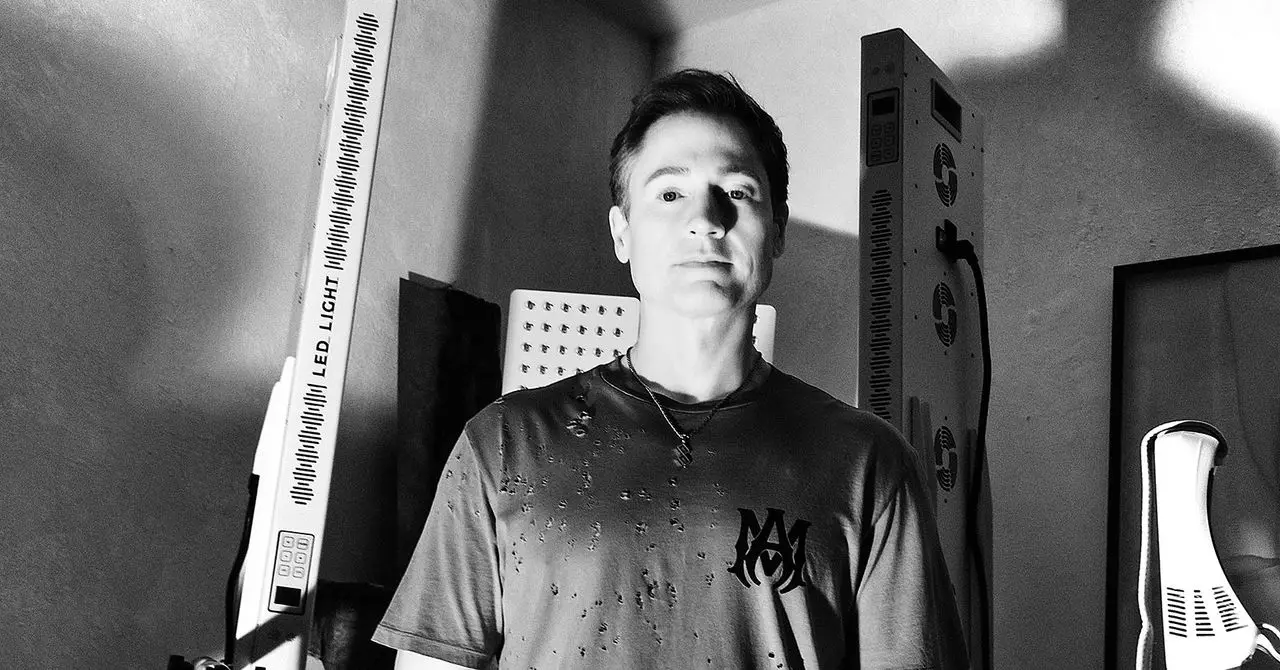In today’s society, the pursuit of eternal youth has become a symbol of ultimate success. The image of Bryan Johnson, a tech billionaire with a meticulously curated lifestyle, epitomizes this obsession. His pristine fruit bowls, spotless kitchens, and high-tech wellness routines appear as a modern-day shrine to perfection. Yet, beneath this glossy surface lies a stark truth: no amount of science, money, or discipline can truly conquer the inevitable reality of mortality. Johnson’s quest for immortality, portrayed as a noble endeavor, actually reveals a profound fear of aging and death that we all harbor, masked behind layers of performance and aesthetic control. His lifestyle, carefully engineered, serves more as a spectacle of human hubris than a genuine path to transcendence.
The perfect imagery of fresh fruit and high-tech wellness routines is a façade that distracts from the underlying rot—literally seen in moldy oranges and spoiled lemons—symbolic of the inevitable decline that no amount of modern medicine can fully stave off. Johnson’s obsession with optimizing every aspect of his body highlights a broader societal trend: we are increasingly fixated on controlling our biology, believing that mastery over our health equates to mastery over our destiny. But this relentless pursuit often neglects the fundamental truth—our biological limits are inescapable, regardless of our technological advancements or wealth.
The Cost of Living in a Performance-Driven World
Johnson’s ultra-modern home, with its concrete floors and minimalistic design, might suggest a focus on functionality and progress. However, it also reflects an emotional void—one that is filled with evidence of a life dedicated primarily to performance rather than genuine human connection. His home is lined with images of family photos, an attempt to insert warmth into a narrative dominated by science and self-control. His children’s participation in his experiments and his strategic disclosures about his regimen reveal a complex dynamic—one where privacy is compromised for visibility, and vulnerability is exchanged for validation.
This emphasis on performance extends beyond health to influence his public persona. Johnson constructs an image of infallibility and control, sharing his sleep routines, diet, and bodily functions openly on social media. His followers are lured into this increasingly transparent world of self-optimization, often oblivious to the underlying toll such relentless scrutiny can take on mental health and authentic human experience. It’s a version of life where vulnerability is masked by curated perfection, and where the fear of death is tamed only temporarily by biological tinkering.
The Myth of Immortality in the Tech Age
Johnson’s infatuation with longevity is part of a larger myth that technology can ultimately grant us eternal life. His elaborate regimen, from plasma transfers to cutting-edge diagnostics, signals a desperate hope to cheat mortality. Nonetheless, it remains fundamentally speculative—an elaborate gamble on what science can achieve in the future. This obsession with longevity is reinforced by a culture that prizes youthfulness and a misguided belief that health is entirely within our control.
The broader social implications are profound. As figures like Johnson push the boundaries of human longevity, they inadvertently promote a dangerous illusion—that aging is a problem to be solved, rather than a natural part of life. The obsession with indefinite youth carries risks of dehumanizing ourselves, undervaluing the wisdom that comes with age, and creating further social divides between those who can afford such treatments and those who cannot. It’s a hubris-laden attempt to defy the fundamental truths of existence, rooted in a fear of insignificance and death’s finality.
Beyond Flesh and Bone: The Illusion of Invincibility
Johnson’s narrative is not just about health; it’s about a larger cultural craving for invincibility. His public persona, reinforced through interviews, documentaries, and social media, portrays him as a specimen of human perfection—an example of what is possible when science and wealth intersect. Yet, his frank acknowledgment that he will die one day underscores a universal truth: no matter how advanced our technologies become, the human condition remains unchanged.
This paradox highlights a fundamental flaw in our collective vision. We cling desperately to the illusion of control, investing colossal resources into postponing death rather than embracing the natural cycle of life. Johnson’s relentless pursuit exposes our discomfort with mortality and our tendency to see aging as a villain needing extermination. We are all, in some ways, prisoners of this myth, convinced that technological mastery can one day defeat mortality altogether.
In the end, the story of Bryan Johnson reveals not just an individual’s obsession with longevity but a societal mirror reflecting our collective fear of death. It exposes the dangerous allure of perfection and the false promise that technology can deliver us from our biological fate. Human life, in all its imperfect beauty, remains inherently transient—an inescapable truth that no amount of scientific ingenuity can fully erase.


Leave a Reply